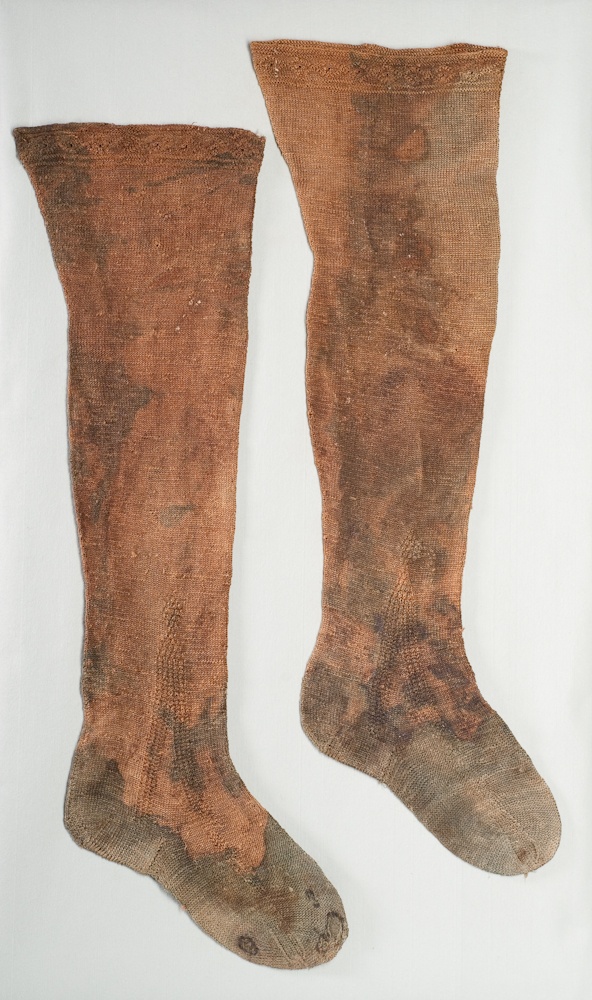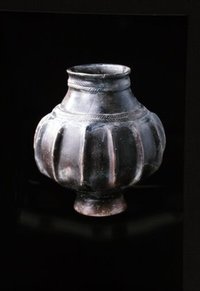Die langen Strümpfe sind aus Baumwollgarn gestrickt. Der seitliche Zwickel ist mit einer betonten Abnahme geschmückt. Der obere Rand ist mit einer eingestrickten Raute geschmückt.
Die Strümpfe gehören zu dem Kinderkleid aus der Renaissance (Inv. Nr. 2002/969/2002). Es ist im Stil der spanischen Mode gehalten und wurde von der lippischen Gräfin Katharina zur Lippe getragen. Sie verstarb am 19. Mai 1600 im Alter von 6 Jahren. Das Kleid wurde 1970 in der herrschaftlichen Gruft der Augustiner-Chorherren in Blomberg gefunden.
en

